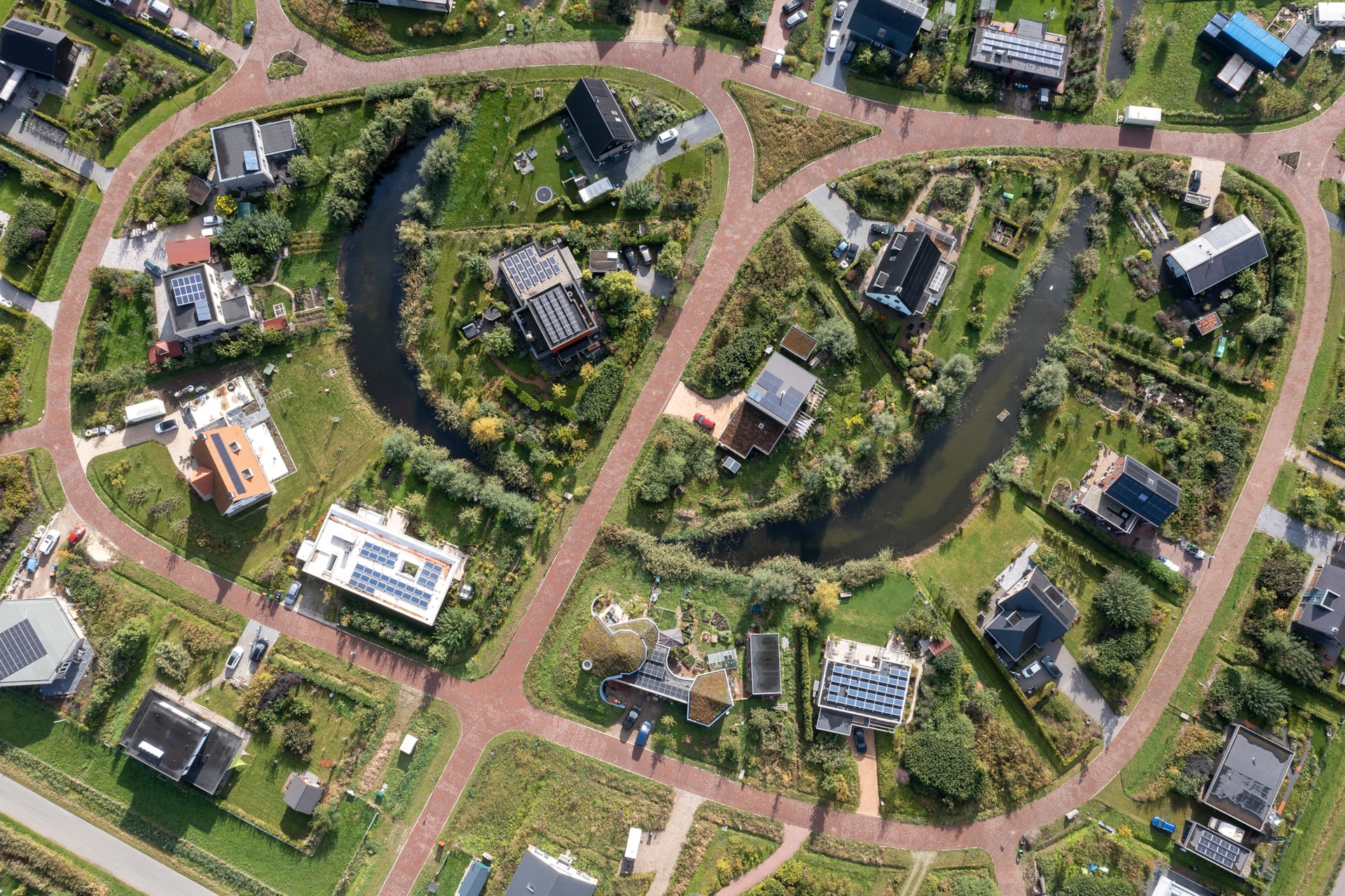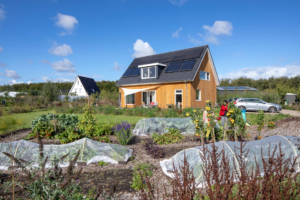Almere Oosterwold Area, a Model of a Harmonious Community Created by Residents

During a trip to the Netherlands this April, I was deeply impressed by the country’s efficient transport network and the urban balance in Amsterdam. As I explored more about its urban planning, I stumbled upon Almere, a new city just 30 km east of Amsterdam, built on reclaimed land in the 1970s. Among its various districts, one stood out as a radical urban experiment: Oosterwold. It has a total area of approximately 43 square kilometers. In 2016, the land was officially opened to private and small developers for purchase and development.
Oosterwold flips traditional urban planning on its head. Instead of a government designing roads, parks, and utilities, here it’s the residents who plan and build everything themselves—from houses to roads, from energy systems to food production and waste management. This model, called self-organized urbanism, places a remarkable amount of trust and responsibility in the hands of citizens.

There’s a catch, though—a good one. Anyone who buys land in Oosterwold must use at least 50% of it for urban agriculture. This rule isn’t just a sustainability checkbox—it transforms the entire landscape. Every household becomes a micro-farm. Fruit trees, vegetable gardens, and pasture dot the neighborhood. Food is local, seasonal, and community-based.
Of course, this freedom comes with challenges. Coordinating services, maintaining quality standards, and ensuring equity across plots aren’t easy. But what Oosterwold offers is not perfection—it’s possibility. It asks: Can we shift from top-down urban design to bottom-up city-making?
As cities worldwide face growing pressure from climate change, housing crises, and disconnection, Oosterwold reminds us of an alternative path—one rooted in trust, cooperation, and the messy but beautiful process of building a place to call home.
References:
https://www.mvrdv.com/projects/32/almere-oosterwold
Cozzolino, S., Buitelaar, E., Moroni, S. and Sorel, N., 2017. Experimenting in urban self-organization. Framework-rules and emerging orders in Oosterwold (Almere, The Netherlands). Cosmos+ Taxis, 4, pp.49-59.



